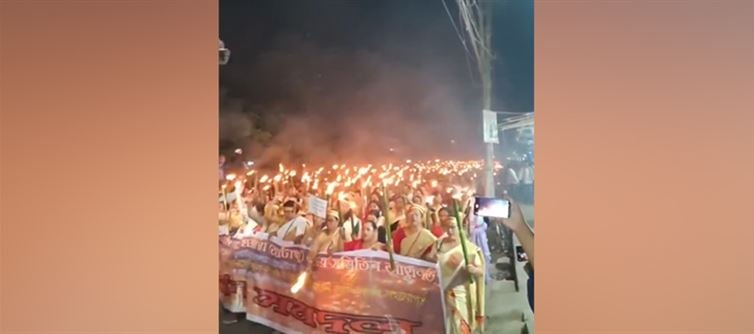
- In the northeastern state of assam, where ethnic identity and political calculation have long intertwined, the streets are now ignited — literally. Six communities — including the Tai Ahom, Koch‑Rajbongshi, and the powerful tea-garden Adivasi groups — are demanding what was promised: Scheduled Tribe (ST) status.
- They are marching, torch in hand, chanting “We want st,” while the ruling Bharatiya Janata Party-led government under Himanta Biswa Sarma watches from the pavilion. elections loom ahead in 2026. The warning from the ground is clear: Promises without delivery create fire.
💥 1. “Decade-Old Pledge, Still Waiting on Paper”
The BJP, with the backing of narendra Modi, had promised st status to six ethnic communities in assam during the 2014 election campaign. Yet years later, the communities remain largely OBCs, still waiting, still hoping. The sense of betrayal isn’t hidden — it’s marching in the streets now.
🧯 2. “Torch-Lights, Not Just Slogans”
The protests are no longer tame demonstrations — they are torch-lit rallies at night, with youth from these communities defying police boundaries and showing the fire is outright. For instance:
“Thousands of Ahom and Rajbongshi youth protested across Assam… staged large-scale protests … words like ‘ST status is our birth-right’.”
Also: “Hundreds … torch-lit rally in Talap, Tinsukia district … demanding Scheduled Tribe status.”
This is not agitation for attention — it’s agitation for redress.
🛡️ 3. “Political Power, Tribal Power-Play”
These communities are no fringe groups — they matter electorally. Their discontent means the BJP’s hold in assam is under pressure. The regional partner, Asom Gana Parishad (AGP), has now expressed support for their st demand.
The message: Tribal politics in assam has shifted from “we will vote you in” to “we will vote you out if you don’t act.”
🔍 4. “The Dilemma of Inclusion vs. Protection”
The protesters demand recognition — st status — for themselves. But existing scheduled tribes in assam fear dilution of their rights.
According to the analysis:
“Opponents argue that adding six new groups would push Assam’s total st population close to 50 percent … the reservations framework may buckle.”
Here lies the complexity: Who qualifies, who protects, who benefits? The state sits between two fires.
📍 5. “Polls Coming, Promises Haunting”
State elections are on the horizon (2026). The protests are not off-message or sporadic — they are deliberately timed, strategically visible. One community warned:
“…If after 25 november our names are not included … we will form our own political party for the Ahoms.”
The torch-lights, chants, rallies — they become ballots waiting to be cast.
🧨 FINAL MIC-DROP
This isn’t just about rights and recognition — it’s about respect, resentment, and revolution. Assam’s tribal voices are no longer whispering — they are roaring. The question before delhi and Dispur: Will you hear the fire before the flame engulfs the election map?
If not, the igniting could well shift from torch rallies to vote shocks on polling day.




 click and follow Indiaherald WhatsApp channel
click and follow Indiaherald WhatsApp channel